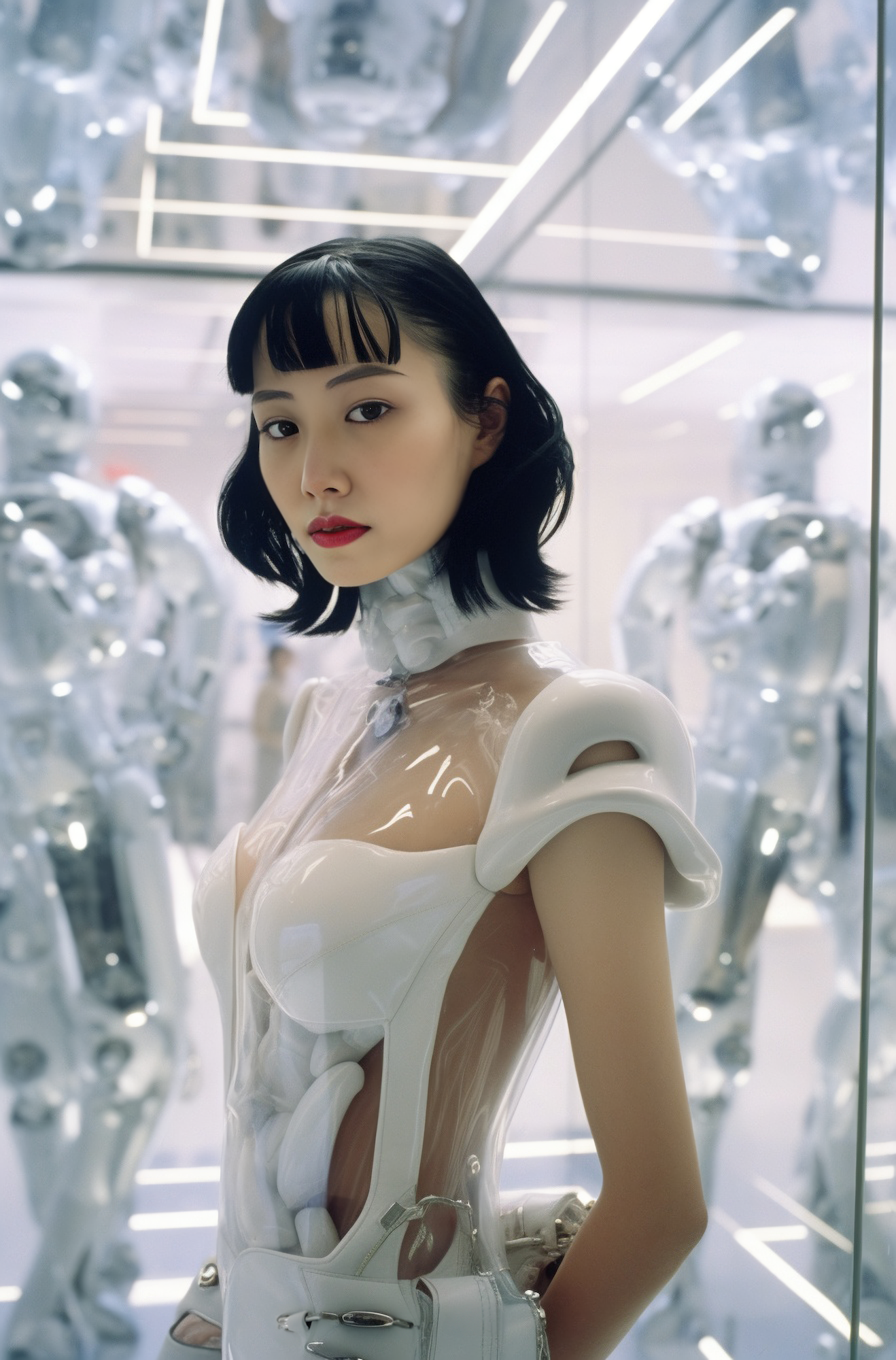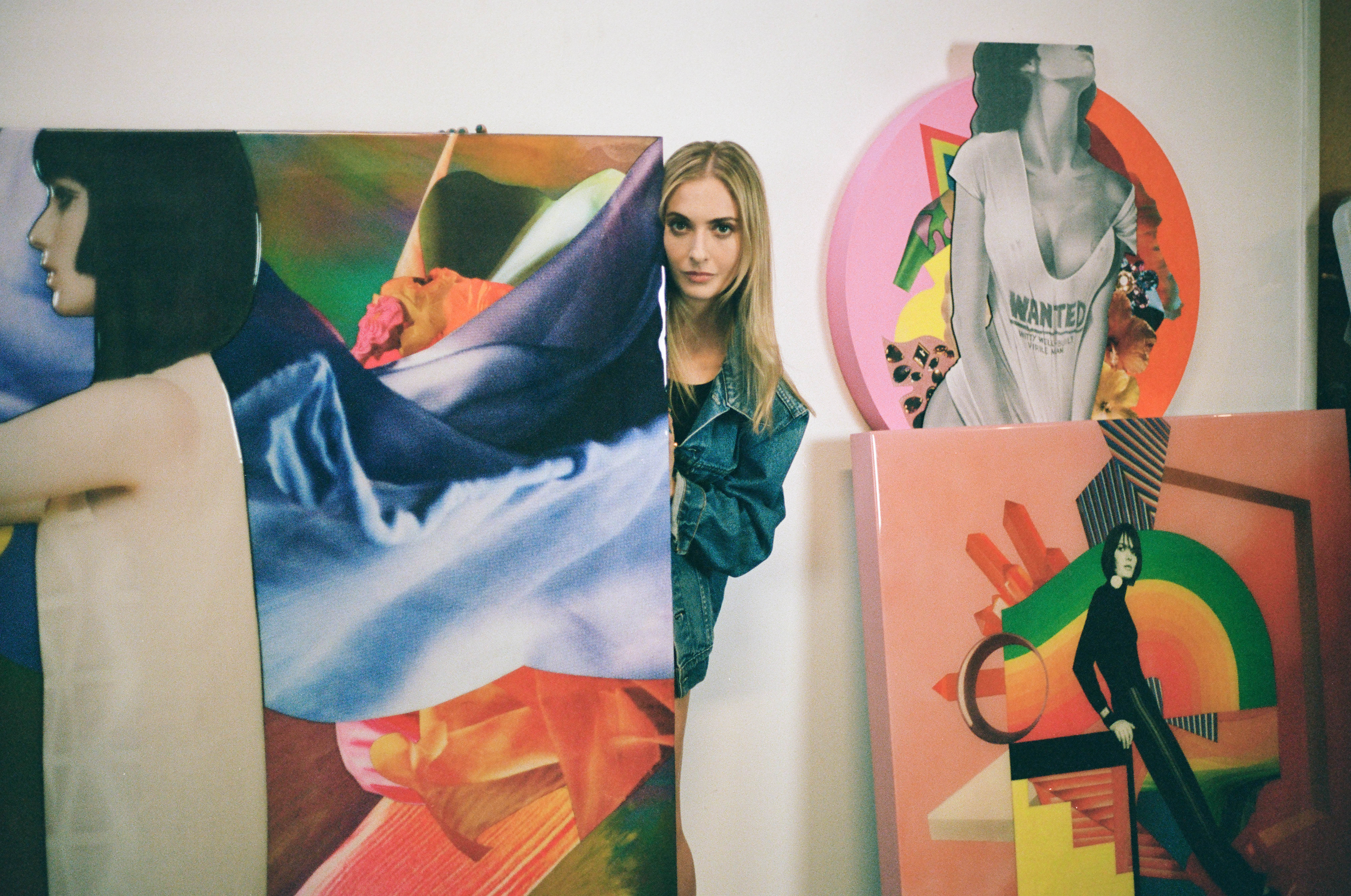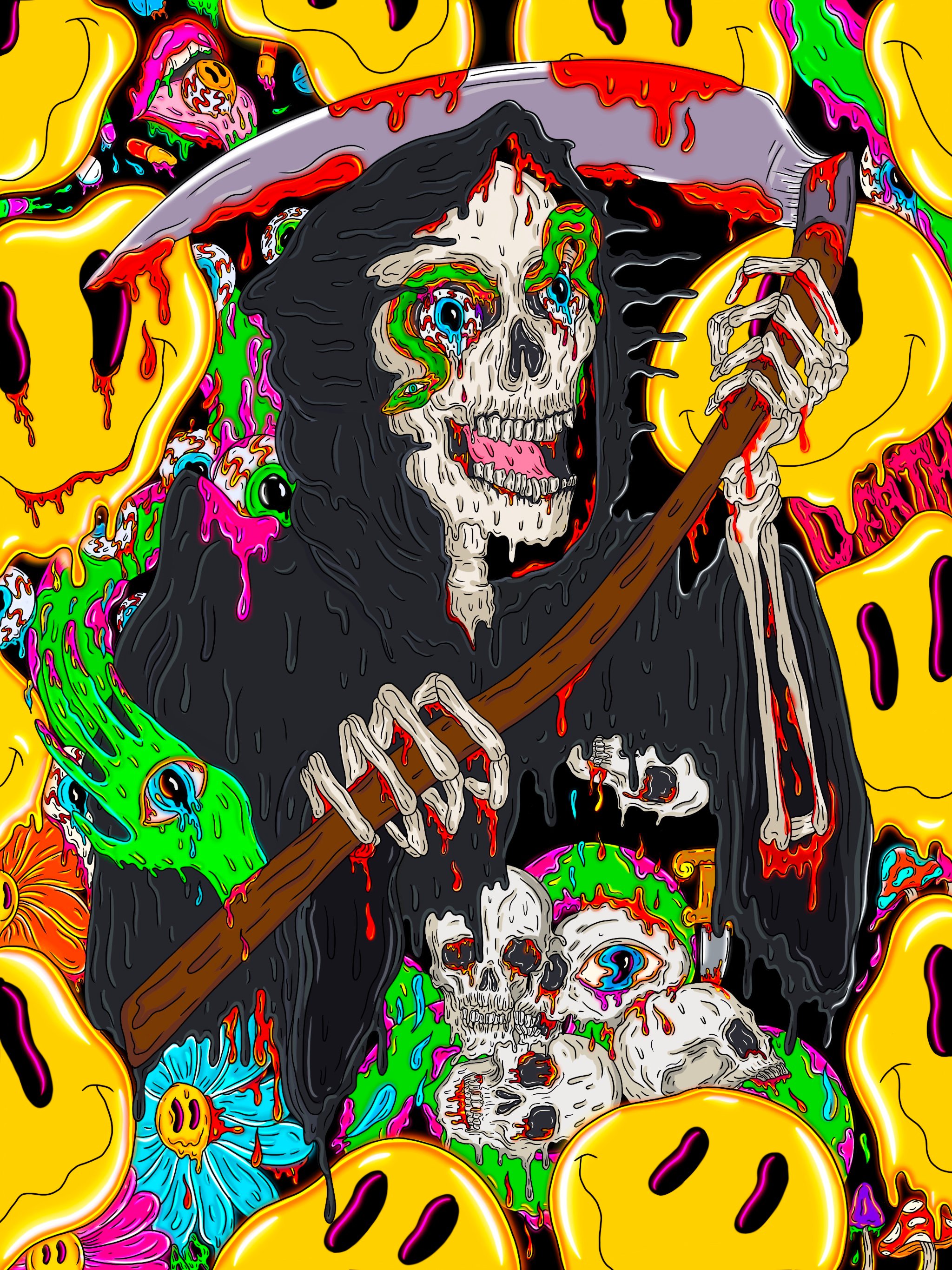About the artist:
Emi Kusano, born in Tokyo in 1990, began her artistic journey as a street photographer on the streets of Harajuku in her teens, leading to an exhibit at the V&A Museum. As a multidisciplinary artist, she explores the intersections of retro-futurism and modern technological acceleration. Her unique AI-infused art has graced the cover of WWD Japan and been featured in Christie's and Gucci auctions. Internationally recognized, her work has been exhibited at venues such as the Saatchi Gallery and the 21st Century Museum of Contemporary Art, Kanazawa, and has been collected in more than a dozen countries around the world.In addition to her visual arts career, Emi is the lead singer and self-producer for Satellite Young, a band that creatively reinterprets 80s J-POP styles through a modern, technologically-driven, sci-fi lens. This innovative approach has garnered international recognition, including an appearance at SXSW 2017, and extends their creativity to installations.
The Interview:
Mika: Emi, first off it’s such an honor to chat with you formally about your art. I am a big fan of yours and have been from the first moment I encountered your artworks. Your voice and energy are extremely unique, it sometimes feels like you can transcend time and space, taking viewers down wild avenues of nostalgic futures and unknown pasts. Can you share with the readers and those new to your story a little about your artistic journey? From musician to interdisciplinary artist, and how did incorporating AI into your work expand or develop your perception on creative expression in our hyper-digital world?
Emi: I actually started experimenting with AI around 2017, initially delving into Style Transfer and GANs. At that time, I explored the unique texture of AI's imperfection, but it didn't quite feel like it was wholly my own creation. Part of this experimentation made its way into my band Satellite Young's song 'Dividual Hearts.' However, by 2023, with tools that allowed the integration of various knowledge domains, I realized this could significantly broaden my artistic expression. Since then, I have been regularly using tools like MidJourney and Stable Diffusion.
My fascination with retro-futuristic worlds, previously expressed through various mediums, was reinvigorated knowing that I could now create these worlds on my own. I've always had a sense of inadequacy in mastering technologies and always needed collaborators - not that it's a bad thing. I used to work with animators and illustrators since I couldn't draw, and with composers for my band since I couldn't read music. The ability to do all this by myself now is incredibly exciting.
M: Animism is a repeating theme in your works. Can you tell us a bit about how Japanese culture relates to objects, and specifically technological objects differently than what you've encountered in other places in the world? How does this play into your process if at all?
E: In creating my works, I realized that all of them follow my Japanese identity. Growing up in Japan, but studying in the U.S. during high school, I discovered the diversity of Japanese fashion and learned to appreciate certain aspects that seemed mundane in Japan. I've brought new insights by sublimating the context of 80s idols into the genre of Synthwave, a culture developed from the English-speaking internet.
Using AI, which primarily operates in English and with data biased towards Western culture, to create a unique Japanese texture was an intriguing challenge. Over the past year, presenting my works in various countries and receiving feedback from collectors has further solidified my Japanese perspective.
For example, there's a unique optimism towards technology in Japan, not as blind obedience to systems, but rather considering technology as living entities to coexist with. Historically, Japanese anime has often portrayed robots as friends, which inspired my new work 'Techno Animism.
M: Do you view on-chain artworks as digital objects? If so, how do you think our understanding of spatiality will evolve in the coming years with more and more art being created and displayed digitally?
E: Over the past few years, I've been frequently interviewed about what NFTs represent, often explaining their significance on Japanese TV shows. However, I always felt something was missing in the understanding of this technology. Beyond its innovative nature, the emergence of a market and a culture around NFTs impressed me greatly. NFTs transformed from being exclusive to tech-savvy and early adopters to a multidisciplinary platform where contemporary artists, fashion designers, and entertainers managing fan communities can all think and create collaboratively. It's hard to articulate, but we have been enjoying digital assets for a long time.
I foresee a natural progression where digital objects transcend gaming platforms, allowing for the trading of game items or even decorating our metaverse spaces with virtual furniture. For the next generation, the distinction between digital and physical objects is increasingly blurred.
M: Who are some of the artists, movies, and books that have inspired you throughout your life? How do other mediums inform your current practice?
E: I've been influenced by a myriad of things. As a child, I watched 'The Powerpuff Girls,' which led me to other American 60s pop culture references like 'The Jetsons' and 'Back to the Future.' In middle school, I discovered anime like 'Evangelion' and other robot-themed series. In the contemporary art world, I was greatly influenced by Takashi Murakami, who treated anime as a form of fine art. Additionally, I looked up to Mariko Mori and her self-portrait series while exploring my own self-portrait series. Her work had a significant impact on me.
M: Can you tell us about exciting projects you have coming up? What are your dream collaborations for 2024?
E: As someone who identifies as a multidisciplinary artist, I'm eager to explore new avenues in 2024. Beyond AI photography, I'm intrigued by the idea of working with physical and three-dimensional objects. While it's tempting to ride the wave of each new AI technology appearing on social media timelines, I'm committed to pursuing my own narrative and the depth of my research.
M: Who are some of your favorite emerging AI artists in the space?
E: There are many, but Matthew Stone is a favorite of mine. He uses his paintings to collaborate with AI in a unique way, creating textures that blend brush strokes with AI in a truly distinctive style.
M: How do you think the collaboration between human intelligence and machine intelligence will change our conception of creative expression in the coming years?
E: Thinking of a dystopian future is easy, but we must continue to dream of a sustainable society where humans coexist with artificial intelligence. We haven't encountered aliens, but we are entering an era of competition with non-human life forms. They are tools, but unlike any we've had before – they are collaborators. I believe we will shift towards a society focused on enjoying our unique narratives and once-in-a-lifetime experiences, possibly moving closer to a more primitive world.




